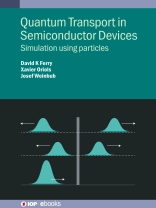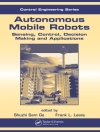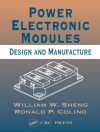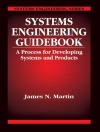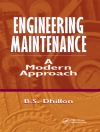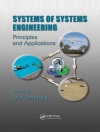This text treats the modelling and simulation of semiconductor devices in the quantum regime with particles, beginning with the early, and current, views of particles in quantum mechanics, and the full quantum mechanical approaches that make full use of this particle approach. Particle-based simulation techniques of quantum devices have the additional advantage of providing very simple and intuitive ways of understanding the transport of electrons, allowing a demystifying view of quantum phenomena in semiconductor devices. This is the first book to combine quantum transport and particle Monte Carlo techniques with a focus on modern semiconductor devices. Written in clear and accessible language suitable for graduate students, formal and technical details are included in several appendices, and a list of exercises and references for further reading are added at the end of each chapter.
Key Features
- First book to combine quantum transport and particle Monte Carlo techniques with a focus on modern semiconductor devices
- Provides a particle-based view of modelling and simulation of semiconductor devices in the quantum regime
- Covers the fundamentals of device modelling and simulation
- Discusses the differences between classical and quantum transport
- Includes references to research and commercial simulation tools that utilize quantum effects, references to external visualization tools, and a supplementary website with additional content
Tabela de Conteúdo
Part I Introduction
1 Introduction
2 The microscopic world and microscopic properties
3 Many-body open systems outside thermodynamic equilibrium
Part II General modeling considerations
4 An overview of semiconductor devices
5 What is needed from quantum mechanics
6 Electron–atom interaction: band structure
7 Electron interactions with fields: the electrostatic approximation
8 Beyond the electrostatic approximation
Part III Simulation techniques
9 The Monte Carlo method
10 Effective potentials and Bohmian trajectories
11 Wigner functions
12 Why not Green’s functions?
Sobre o autor
David Ferry is Regents’ Professor Emeritus in the School of Electrical, Computer, and Energy Engineering at Arizona State University. He was also graduate faculty in the Department of Physics and the Materials Science and Engineering program at ASU, as well as Visiting Professor at Chiba University in Japan. He came to ASU in 1983 following shorter stints at Texas Tech University, the Office of Naval Research, and Colorado State University. In the distant past, he received his doctorate from the University of Texas, Austin, and spent a postdoctoral period at the University of Vienna, Austria. He enjoys teaching (which he refers to as “warping young minds”) and research. The latter is focused on semiconductors, particularly as they apply to nanotechnology and integrated circuits, as well as quantum effects in devices. In 1999, he received the Cledo Brunetti Award from the Institute of Electrical and Electronics Engineers, and is a Fellow of this group as well as the American Physical Society and the Institute of Physics (UK). He has been a Tennessee Squire since 1971 and an Admiral in the Texas Navy since 1973. He is the author, co-author, or editor of some 40 books and about 900 refereed scientific contributions.
